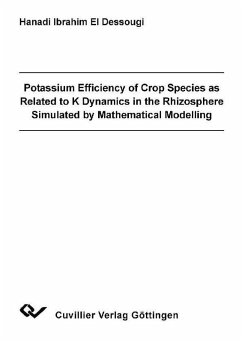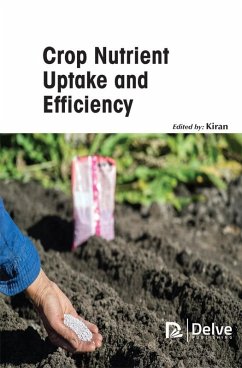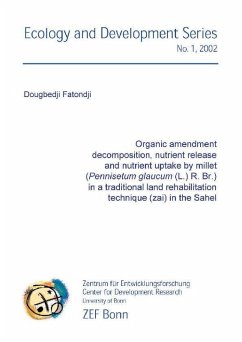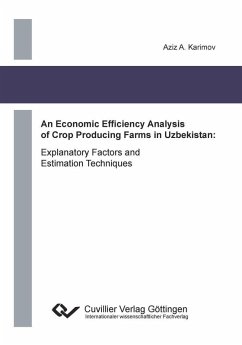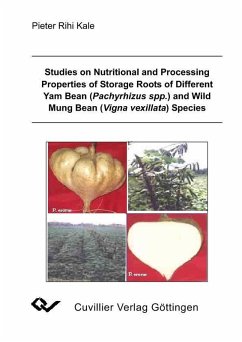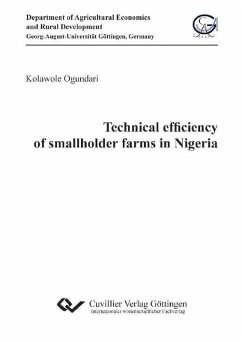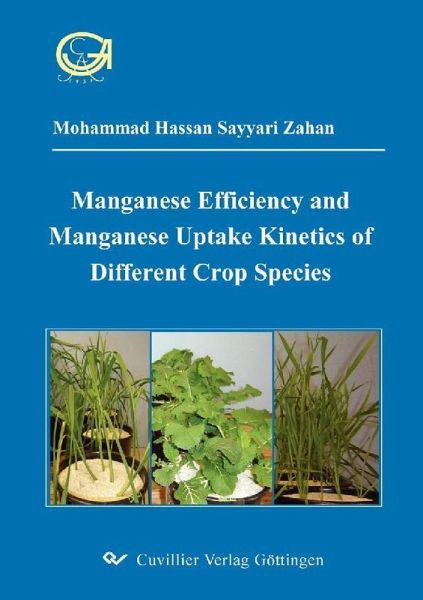
Manganese Efficiency and Manganese Uptake Kinetics of Different Crop Species (eBook, PDF)

PAYBACK Punkte
0 °P sammeln!
Manganese deficiency in field crops has been reported worldwide, which often limits
crop growth and results in decreased yield. Manganese efficiency is the ability of plants to
grow under low soil Mn availability. Plant species differ in their Mn efficiency. This study
was done with the objective to investigate the possible mechanisms responsible for the
differences in Mn efficiency of crop species or genotypes of the same species. We
hypothesized that different Mn efficiency might be due to chemical mobilization of Mn in soil,
differences in root growth at low Mn...
Manganese deficiency in field crops has been reported worldwide, which often limits
crop growth and results in decreased yield. Manganese efficiency is the ability of plants to
grow under low soil Mn availability. Plant species differ in their Mn efficiency. This study
was done with the objective to investigate the possible mechanisms responsible for the
differences in Mn efficiency of crop species or genotypes of the same species. We
hypothesized that different Mn efficiency might be due to chemical mobilization of Mn in soil,
differences in root growth at low Mn supply or due to differences in Mn uptake kinetics.
Manganese efficiency of different wheat cultivars comprising two bread wheat (Triticum
aestivum L. cvs. PBW 343 and PBW 502) and two durum wheat (Triticum durum L. cvs. PDW
274 and PDW 233) cultivars and different species compraising wheat (Triticum aestivum L.
cv. PBW 343), raya (Brassica juncea L. cv. RLM 619) and oat (Avena sativa L. cv. Aragon)
were evaluated in pot experiments conducted on Mn deficient soil with and without Mn
fertilization. Nutrient solution experiments were done to determine the uptake kinetic
parameters. Durum wheat cultivars were less Mn efficient than bread wheat cultivars in soil
culture. The effect of Mn nutrition on root growth showed that neither in solution culture nor
in soil culture root growth was specifically affected by Mn supply, i.e. the root surface areadry
matter yield ratio (RA/DMY ratio) was similar at all Mn levels. Therefore root growth was
not responsible for different Mn efficiency among wheat cultivars grown in soil or in solution
culture. In soil bread wheat cultivars had a 3 to 4 times higher Mn net influx than durum
wheat cultivars. The different Mn net influx between cultivars was the reason for differences
in Mn efficiency. In contrast, in solution culture all cultivars showed a similar Mn influx,
therefore, the higher Mn influx of bread wheat cultivars was not due to more efficient uptake
kinetics. The results indicate that all cultivars reduced free Mn+2 concentration in soil solution,
which might have been because of Mn complexation in soil solution or because of Mn
immobilization at the root surface. This effect was apparently stronger in durum than bread
wheat cultivars and probably the reason for the lower Mn influx of durum wheat cultivars.
To study Mn efficiency of three crops, wheat, oat and raya were grown in a Mn
deficient soil and a Mn sufficient soil by adding different Mn levels (from 1 to 8 mmol Mn kg-
1 soil). To determine the uptake kinetic parameters a nutrient solution experiment was done
with a range of Mn concentrations. The results in nutrient solution show that at low Mn supply
all three crops were similarly Mn efficient, whereas in soil raya was more Mn efficient than
oat and wheat. The higher Mn efficiency of raya was mostly due to its ability to obtain a
higher Mn concentration in shoots and this was because of a 5.4 times higher Mn influx than
wheat and oat. The higher Mn influx of raya in soil was not due to more efficient uptake
kinetics as shown above, but to its abaility to increase significantly Mn concentration in soil
solution at the root surface whereas wheat intendency decreased it.
Dieser Download kann aus rechtlichen Gründen nur mit Rechnungsadresse in A, B, BG, CY, CZ, D, DK, EW, E, FIN, F, GR, HR, H, IRL, I, LT, L, LR, M, NL, PL, P, R, S, SLO, SK ausgeliefert werden.




